EMS Proceedings and Other Publications
Klang, Kar, und Melodie: a Crash Course on Musical Narrative
Juan Chattah
Agnes Scott College, Decatur, USA
jchattah@agnesscott.edu
Abstract
Recent scholarship challenges the notion of musical narrative by attempting to establish a parallel with literary narrative. In calling attention to the absence of a narrating voice, the inability of music to narrate in the past tense, and inconsistencies about agency, criticism on musical narrative erroneously sought to equate music with language based on epistemological correspondences rather than structural ones. Mark Wingate’s award-winning piece Klang, Kar, und Melodie, serves as a point of departure to: 1) rethink and clarify linguistic terminology and methodologies while adapting these to musical analysis; 2) propose a taxonomy that helps identify the features that contribute to the perception of narrative qualities in music; 3) establish an inter-disciplinary and inter-analytical approach applicable to musique concrète. This article concludes by introducing the narrative cube: a three-dimensional model that evaluates, comparatively, the musical parameters that generate narrative interpretations.
Article
1. INTRODUCTION
Mark Wingate describes his Klang, Kar, und Melodie as “a day in the life of a commuter in an American metropolis…a hallucinatory journey through the congested arterial streets and back alleyways of an American city near the end of the millennium…” (Wingate 1996). This inspired composition, which earned him the Prix de la Musique Electroacoustique Caractère during the 23rd International Electroacoustic Music Competition in Bourges, France, unmistakably unfolds a narrative plot. But, what exactly contributes to this perception? How can music narrate a story? Is there a systematic theory that helps identify, name, and analyze the basic constituents and techniques of musical narrative?
2. THE TWILIGHT OF MUSICAL NARRATIVITY
Theories on musical narrativity have emerged as an outgrowth of musical semiotics since the 1980s. Drawing on musical criticism, historical interpretation, literary criticism, philosophical study of expression and representation, these theories sought to correlate musical structures and semantic content in both vocal and instrumental music. Recent scholarship, however, challenges the notion of musical narrative by attempting to establish a parallel with literary narrative. Carolyn Abbate draws on Plato’s and Aristotle’s diegetic (i.e. epic-narrative) vs. mimetic (i.e. dramatic) modes of representation in poetry, and calls attention to the absence of a narrating voice, the inability of music to narrate in the past tense, and inconsistencies about agency (Abbate 1996).
Precedents for Abbate’s stance with regard to musical narrative abound. Suzanne Langer eliminates musical narrative by insinuating the implausibility of musical semiotics, and rejecting musical syntax and musical pragmatics: “the analogy between music and language breaks down if we carry it beyond the mere semantic function in general, which they are supposed to share” (Langer 1957). Surprisingly, Igor Stravinsky throws the baby out with the bathwater stating that “music is, by its very nature, essentially powerless to express anything at all, whether a feeling, an attitude of mind, a psychological mood, a phenomenon of nature, etc.” (Stravinsky 1998). Similarly, Jean-Jacques Nattiez adopts a radical stance and states that “music is not a narrative,” suggesting that the consideration of music as narrative has been a type of fashion, the latest vogue. In his article entitled “Can We Speak of Narrativity in Music” Nattiez mentions that “it would be worth asking oneself why musicology at the present time is tempted to treat music as narrative” (Nattiez 1990). In a comprehensive study that evaluates these (and many other) views on musical narrativity, Fred Maus concludes “the exploration of instrumental music as narrative remains a tantalizing, confusing, problematic area of inquiry” (Maus 2005).
New trends aim to explain musical narrative either in terms of structural paradigms (e.g., purely technical description) and/or subjective close readings (e.g., assigning fictional agents to musical events); these studies advance musical narrativity and yet reveal limitations in the development of this area of inquiry. Scholars who reject musical semiotics, syntax, pragmatics, or narrative, erroneously seek to equate music with language concentrating on epistemological correspondences rather than structural ones. Constructing a practical theory for musical narrative requires reconsidering linguistic terminology and methodologies, as well as adapting these to the analysis of music.
In this article, I first outline the required conditions for musical narrative. Then, I elucidate how the concepts of phonology, semantics, syntax, and pragmatics address the narrative conditions in music. And lastly, I introduce the narrative cube: a three-dimensional model that evaluates, comparatively, the musical parameters that generate narrative interpretations. Therefore, this crash course seeks to: 1) rethink and clarify linguistic terminology and methodologies while adapting these to musical analysis; 2) propose a taxonomy that helps identify the features that contribute to the perception of narrative qualities in music; 3) lay down an inter-disciplinary and inter-analytical approach applicable to musique concrète.
3. TERMINOLOGY
Narrativity describes the required qualities of a text (of any nature) to present a story, as well as the processes employed to interpret that story. Narrativity should not be confused with narratology, which observes plot and character patterns that operate within a narrative. Musical narrativity focuses on the degree to which narrative conditions are met. I distinguish three narrative conditions: 1) music builds a fictional space, 2) music presents fictional characters and objects, and 3) music depicts events in time. Phonology, semiotics, and syntax, correspondingly, operate within music to realize these three narrative conditions. Pragmatics, as will become clear later in this article, operates at every level providing a context that specifies meaning. Table 1 is a synopsis of the concepts explained in the forthcoming paragraphs.
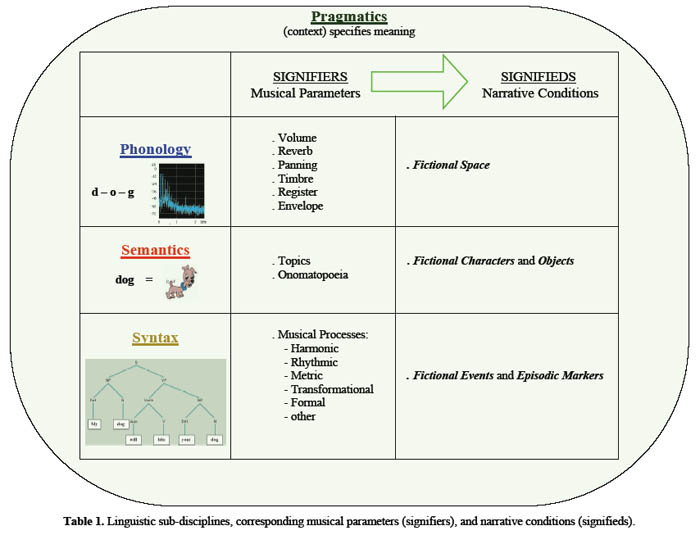
Table 1. Linguistic sub-disciplines, corresponding musical parameters (signifiers), and narrative conditions (signifieds).
Phonology accounts for the combination, organization, function, and meaning of sounds within language. The phonological study of the word “dog” would focus on the individual speech formants. Spectrograms of the word “dog,” as uttered in Utah and in London for example, would reveal different formants corresponding to the different accents. Similarly, the phonological study of music would address its acoustic characteristics, with emphasis on timbre, volume, register, panning, equalization, reverb, and envelope. These phonological characteristics have the potential to build a fictional space in which the narrative plot will develop [1] In example 1, numerous sounds frame the fictional space of Klang, Kar und Melodie: volume provides the listener-to-source distance, panning locates sounds on a left-right axis, and the lack of reverb portrays an open rather than closed space [2].
Example 1. From Klang Kar, und Melodie. (click to listen)
Semantics studies the relationship between signs and their meanings [3]. The word “dog” refers to a friendly animal that often barks and wags its tail [4]. Musical semantics focuses on the relationships between musical signs and extramusical meaning. This link is often established by means of onomatopoeia or musical topics [5]. Musical semantics has therefore the potential to present fictional characters and objects involved in the narrative plot. In example 2, and often in musique concrète, onomatopoeia reaches almost iconic identity; the horn, tire-screeching, and engine sounds, stand for the fictional characters in Klang, Kar, und Melodie: numerous cars circulating the musical texture. In example 3, later in the piece and after a car crash, repair tools become the fictional characters, assembling the musical texture.
Example 2. From Klang Kar, und Melodie. (click to listen)
Example 3. From Klang Kar, und Melodie. (click to listen)
Syntax studies the rules to construct grammatically correct and well-ordered sentences. A syntactical analysis of “my dog is very friendly,” would concentrate on the patterned relations that govern the combination of the word “dog” as a noun, with other words in the sentence acting as verbs, modifiers, etc. Musical syntax attends to any parameter or process that relate musical elements, such as harmony, rhythm, meter, melodic transformation, form, etc; these processes could be addressed combined or in isolation. Musical syntax has the potential to depict fictional events caused and experienced by the characters, and to set up episodic markers. Generally, syntax relies on the listener’s expectations derived from the (subliminal) recognition of patterns in a single work, or in multiple works of a particular genre or style. For instance, the recurrence of musical gesture x followed by musical gesture y will set off a syntactical pattern; an instance of gesture x not followed by gesture y would imply a deviation or a lack of closure (i.e. narrative events) which in turn intensifies the tension [6]. In example 4, numerous syntactical events could be observed: 1) a rallentando leading to a long sonority on the downbeat are typical cadential markers signifying the end of a narrative section: the mechanics finished repairing the car; 2) the car’s startup sound not followed by the running engine sound suggests the car has not been repaired correctly, motivating a return to the repairing activities [7]. In example 5, towards the end of the piece, the startup sound, this time followed by the running engine sound signifies the successful reparation of the car; this event leads (as way of recapitulation) back into the highway [8].
Example 4. From Klang Kar, und Melodie. (click to listen)
Example 5. From Klang Kar, und Melodie. (click to listen)
Pragmatics studies language in context, focusing on the relationship between signs and their users, and bridging the gap between literal and figurative meaning. Pragmatics applies to phonology, semantics, and syntax simultaneously. The pragmatic consideration of the phrase “Whattup dog?” (uttered by a hip young New Yorker greeting a friend) would include: 1) the particular transformation of sounds denoting an accent and connoting geographical place as well as socio-cultural origin (i.e. phonetics), 2) the change from a literal meaning of “dog = animal” to the figurative meaning of “dog = friend” (i.e. semiotics), and 3) the faulty but meaningful and socially accepted grammatical construction (i.e. syntax). Just as “dog” coexists on all three planes with meanings further specified by pragmatics, so does any particular musical event; pragmatics, in the form of intra-musical or extra-musical context, helps specify meaning at the phonological, semantic, and syntactical levels of music [9]. Understood as a system of contextualized signifiers, example 6 establishes: 1) a fictional space: open and wide, most probably a highway, 2) fictional characters: regular cars, police cars, and ambulances, and 3) fictional events: a thrilling chase and a sudden car crash.
Example 6. From Klang Kar, und Melodie. (click to listen)
4. THE NARRATIVE CUBE
Having recognized how musical phonology, semantics, and syntax promote narrative interpretations, new questions arise: Is a piece like Klang, Kar, und Melody at all times narrative, or are there “narrative moments”? How can we measure musical narrativity? Can we compare degrees of narrativity among different pieces, or even among sections of the same piece? To answer these questions I developed the narrative cube: a cognitive/perceptual model that results from mapping musical phonology, semiotics, and syntax onto a three-dimensional space. Comparing Klang Kar und Melodie with newly composed pieces by Mark Wingate portraying different phonological, semantic, and syntactic features, will help outline and explain the model [10].
Example 7. From St. Thomas (beginning) (click to listen)
Example 8. From From Scratch (beginning) (click to listen)
Example 9. From Remember Seven (final section) (click to listen)
Each axis of the cube represents one of the three narrative components. As illustrated in figure 1, the height (z) represents phonology, the ordinate (y) represents semantics, and the abscissa (x) represents syntax.
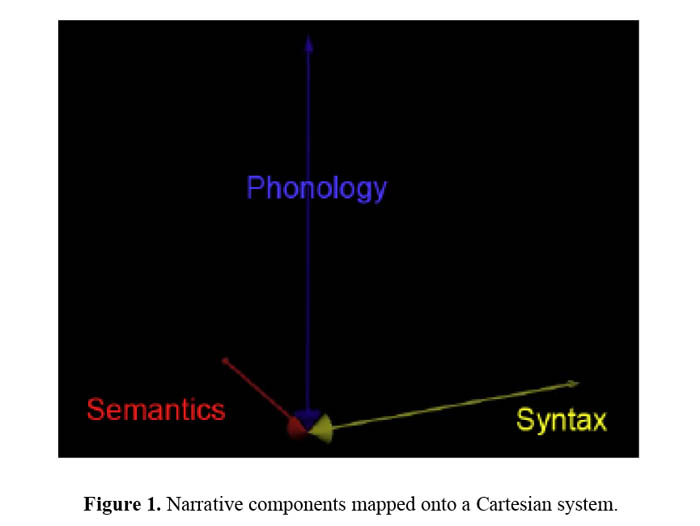
Figure 1. Narrative components mapped onto a Cartesian system.
The origin (where all three axes meet) represents maximal specificity in every parameter. Conversely, different degrees of abstraction will be located away from the origin. As shown in figure 2.a, any point where the height (z) equals zero (0) reflects maximal phonological specificity; the more z is removed from zero the more the phonological abstraction [11]. Analogously, semantic specificity reaches a maximum where the ordinate (y)=0, and syntactical specificity where the abscissa (x)=0; this is shown in figures 2.b and 2.c. Note that the gradual change in color-intensity is analogous to the degree of specificity/abstraction. In this article I do not attempt to define the criteria for maximal specificity. Furthermore, different analysts would conceive different criteria, and different repertoires should require different criteria. The narrative cube is a graphical depiction of a listener’s narrative experience, a modeling of individualized subjectivity, a semiotic construct that provides an underlying structure of signification [12].
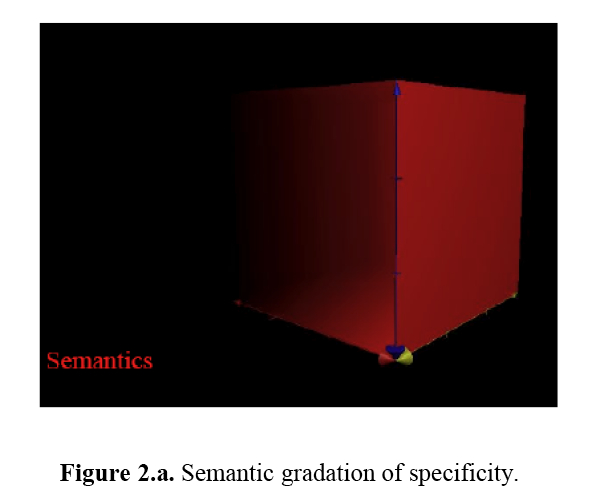
Figure 2.a. Semantic gradation of specificity.
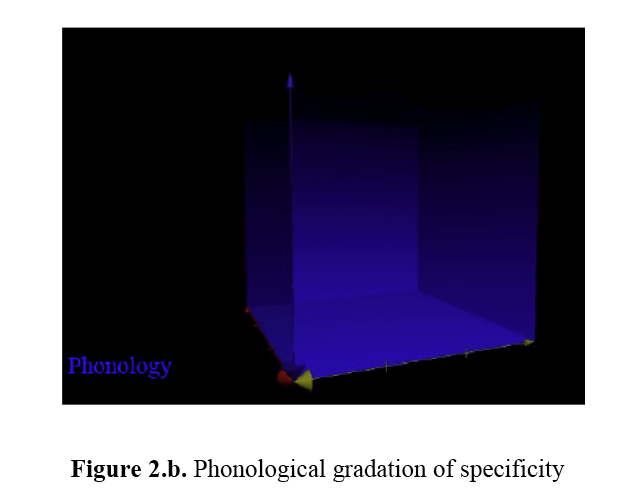
Figure 2.b. Phonological gradation of specificity
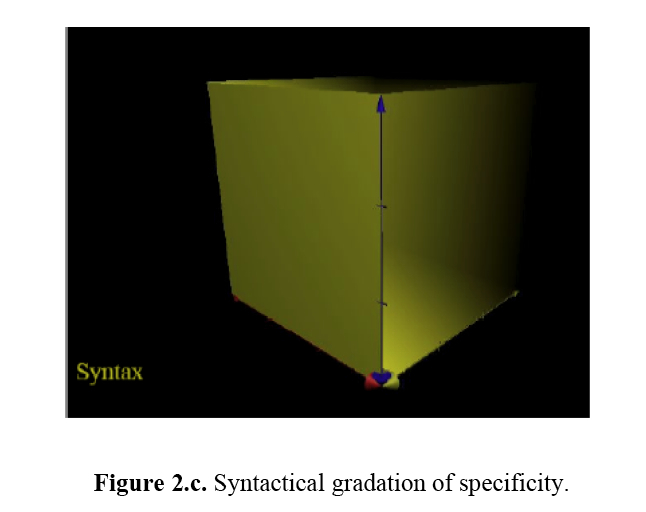
Figure 2.c. Syntactical gradation of specificity.
Video 1 shows the superposition of the phonological, semantic, and syntactical parameters that characterizes the narrative cube. Locating a piece of music in a specific point inside this cube would reflect a degree of specificity or abstraction according to its phonological, semantic and syntactical characteristics. In video 1, we move from the origin –representing maximal specificity in all parameters- to the opposed corner –representing maximal abstraction in all parameters- and back to the origin.
Video 1. The Narrative Cube
Proposing a quantitative subdivision of the cube, in which each axis contains a whole-number scale from zero (0) to two (2), generates twenty-seven narrative situations, making possible a numeric and comparative analysis of the narrative dimension. Video 2 shows the proposed subdivision as a grid; as usual, the degree of color-intensity is analogous to the degree of specificity/abstraction.
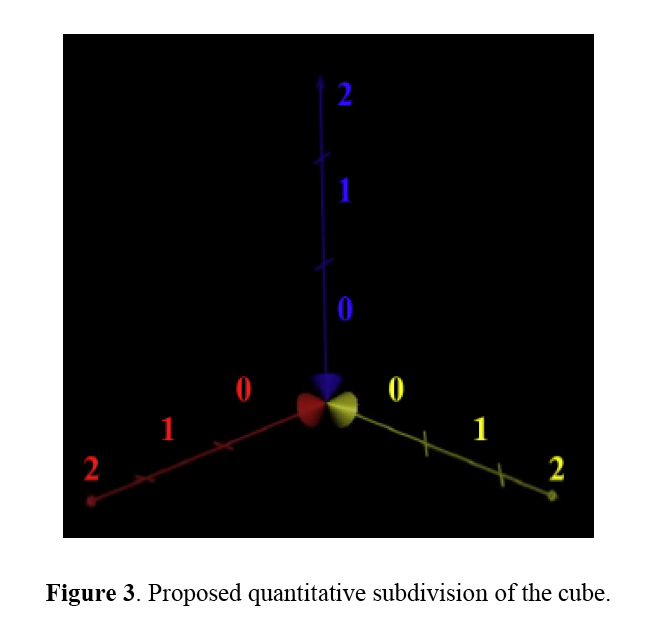
Figure 3. Proposed quantitative subdivision of the cube.
Video 2. Resultant grid inside the cube.
A piece could travel through narrative spaces (i.e. sometimes being more evident in its narrative and sometimes less). For instance, it could begin at maximal narrativity and exhibit phonological, semantic, and syntactic transformations leading to narrative abstraction. Narrativity would ultimately be perceived as a form defining parameter [13]. Video 3 excludes the grid and front sides, permitting the visualization of the cube’s interior, and contains two spheres illustrating narrative extremes; the brighter sphere is located at maximal narrative specificity and the darker sphere at maximal narrative abstraction [14].
Video 3. Spheres representing maximal specificity and abstraction.
In figure 4, Mark Wingate’s Klang, Kar und Melodie is located at the origin of the Cartesian system, that is narrative index (0,0,0), because of its specific fictional space (z=0), characters (y=0), and events (x=0).
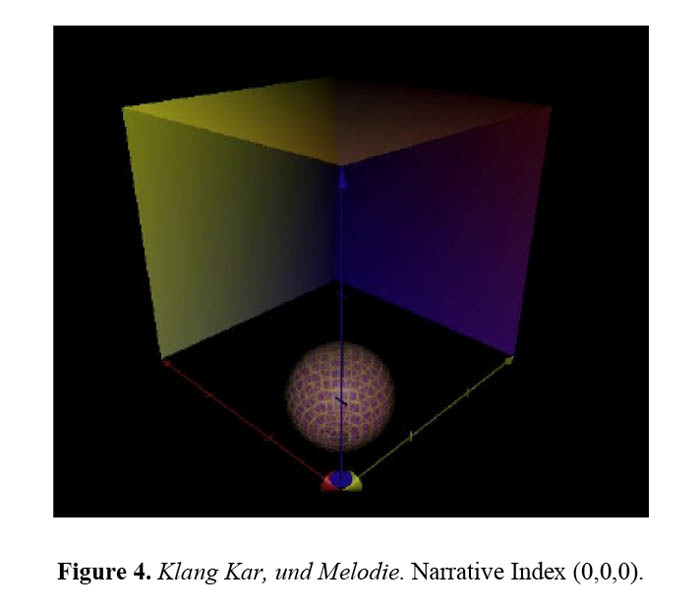
Figure 4. Klang Kar, und Melodie. Narrative Index (0,0,0).
Example 10. From Klang Kar, und Melodie. (click to listen)
St. Thomas illustrates clear space through its phonology (z=0), but lacks specificity in its characters (y=2) (unless considered as self referential); even when syntactical processes are clear, a lack of referential semantics renders these as abstract (x=2); therefore, St. Thomas’ narrative index is (2,2,0). However, a different listener might create a semantic association between the motivic ideas and (for instance) an onomatopoeic representation of a train; this re-interpretation of the semantic level would in turn trigger a re-interpretation of the syntactical events, re-locating St. Thomas on narrative index (1,1,0). Figure 5 illustrates these two possible interpretations.
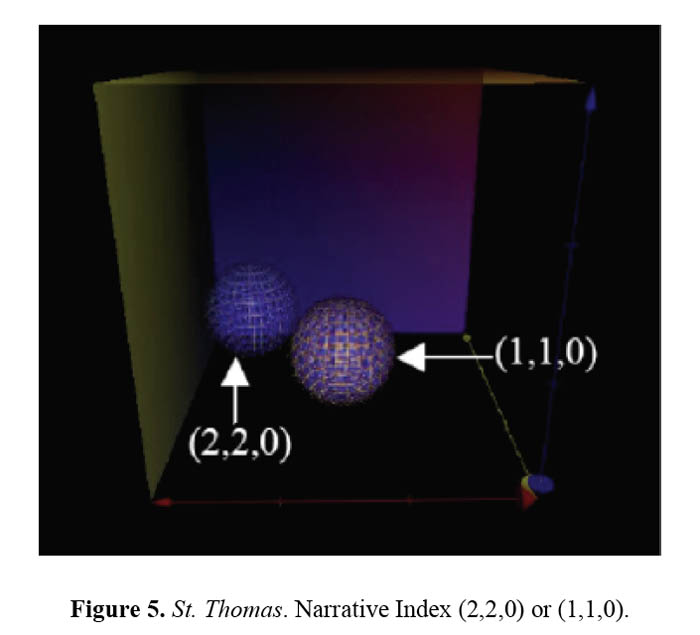
Figure 5. St. Thomas. Narrative Index (2,2,0) or (1,1,0).
Example 11. From St. Thomas (beginning) (click to listen)
As shown in figure 6, I propose locating From Scratch on (0,1,0). Its phonology is clear and its events are fairly referential, if assuming an anthropomorphic representation of scratches as characters.
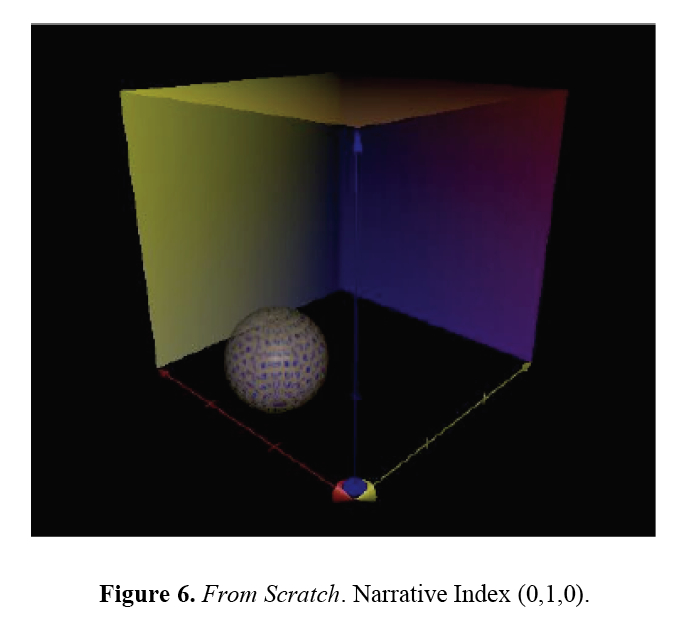
Figure 6. From Scratch. Narrative Index (0,1,0).
Example 12. From From Scratch (beginning) (click to listen)
Remember Seven’s also presents a clear space, but in contrast to From Scratch, its characters are quite clear. The ornamental vocal gestures in conjunction with the bass drones clearly hint at Indian music. A listener not familiarized with Indian music would associate the overall sound with a ‘meditative state’ or with ‘Middle-Eastern religious chant.’ In any case, its fictional space is specific (z=0), the human vocalizations provide specific characters (y=0), and the syntactical organization of sounds could be understood as establishing a ‘state of stasis’ event (x=1). Therefore, I locate Remember Seven at (1,0,0); this is shown in figure 7.
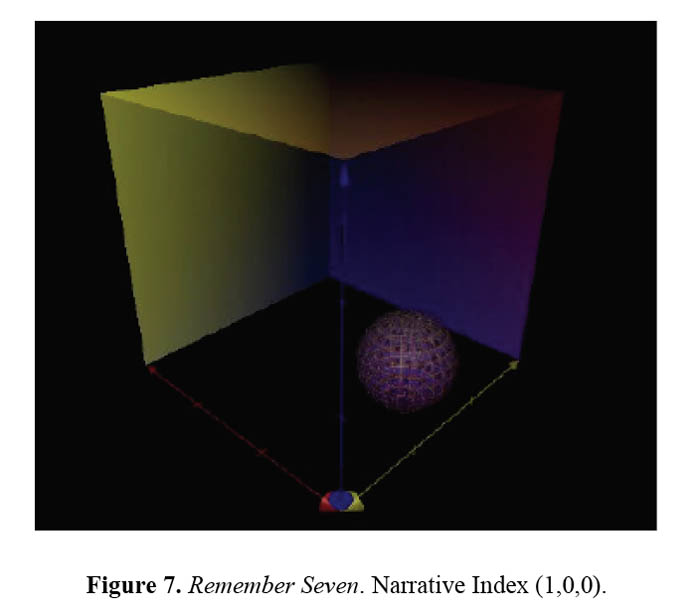
Figure 7. Remember Seven. Narrative Index (1,0,0).
Example 13. From Remember Seven (final section) (click to listen)
5. CONCLUSION
This preliminary model requires refinement. Is a subdivision in three absolute levels (zero, one, two) enough? Would a subdivision in ten levels be enough? Since absolute levels hinder the perception of multiple gradations, could each parameter operate as a continuum? And, as a continuum, could music ever reach maximal specificity in all parameters? Could music reach maximal abstraction in all parameters? How would such piece sound? If applied to a repertoire other than musique concrète, should the analyst consider different phonological renditions? For instance period instruments vs. modern instruments; or close-miking vs. far-miking. What is then the phonological ‘Ur-text’? These questions provide a wide-ranging agenda for further research. It is my hope that the proposed taxonomy in conjunction with the narrative cube will provide access to a terrain of musical interpretation and analysis that has so far been charted only very superficially.
6. BIBLIOGRAPHY
![]() Abbate, Carolyn. 1996. Unsung Voices. Princeton University Press.
Abbate, Carolyn. 1996. Unsung Voices. Princeton University Press.
![]() Agawu, Kofi. 1991. Playing with Signs. Princeton University Press.
Agawu, Kofi. 1991. Playing with Signs. Princeton University Press.
![]() Chandler, Daniel. 2002. Semiotics: The Basics. London: Routledge.
Chandler, Daniel. 2002. Semiotics: The Basics. London: Routledge.
![]() Chattah, Juan. 2006. Semiotics, Pragmatics, and Metaphor in Film Music Analysis. UMI Research Press.
Chattah, Juan. 2006. Semiotics, Pragmatics, and Metaphor in Film Music Analysis. UMI Research Press.
![]() Danesi, Marcel and Paul Perron. 1999. Analyzing Cultures: An Introduction and Handbook. Bloomington: Indiana University Press.
Danesi, Marcel and Paul Perron. 1999. Analyzing Cultures: An Introduction and Handbook. Bloomington: Indiana University Press.
![]() Emmerson, Simon, ed. 1986. The Language of Electroacoustic Music. London: Macmillan.
Emmerson, Simon, ed. 1986. The Language of Electroacoustic Music. London: Macmillan.
![]() Hatten, Robert S. 1994. Musical Meaning in Beethoven. Bloomington: Indiana University Press.
Hatten, Robert S. 1994. Musical Meaning in Beethoven. Bloomington: Indiana University Press.
![]() Huron, David. 2006. Sweet Anticipation. MIT press.
Huron, David. 2006. Sweet Anticipation. MIT press.
![]() Langer, Susanne. 1957. Philosophy in a New Key: A Study in the Symbolism of Reason, Rite, and Art. Harvard University Press.
Langer, Susanne. 1957. Philosophy in a New Key: A Study in the Symbolism of Reason, Rite, and Art. Harvard University Press.
![]() Lacey, Nick. 2000. Narrative and Genre: Key Concepts in Media Studies. New York: St. Martin Press.
Lacey, Nick. 2000. Narrative and Genre: Key Concepts in Media Studies. New York: St. Martin Press.
![]() Licata, Thomas. 2002. Electroacoustic Music: Analytical Perspectives. Greenwood Press.
Licata, Thomas. 2002. Electroacoustic Music: Analytical Perspectives. Greenwood Press.
![]() Lidov, David. 2005. Is Language a Music? Writings on Musical Form and Signification. Indiana University Press.
Lidov, David. 2005. Is Language a Music? Writings on Musical Form and Signification. Indiana University Press.
![]() Maus, Fred Everett. 1997. “Narrative, Drama, and Emotion in Instrumental Music.” The Journal of Aesthetic and Art Criticism, 55:3. University of Virginia Press.
Maus, Fred Everett. 1997. “Narrative, Drama, and Emotion in Instrumental Music.” The Journal of Aesthetic and Art Criticism, 55:3. University of Virginia Press.
![]() Maus, Fred Everett. (Accessed 16, August, 2006) “Narratology, Narrativity.” Grove Music Online ed. L. Macy, http://www.grovemusic.com.proxy.lib.fsu.edu
Maus, Fred Everett. (Accessed 16, August, 2006) “Narratology, Narrativity.” Grove Music Online ed. L. Macy, http://www.grovemusic.com.proxy.lib.fsu.edu
![]() Meyer, Leonard. 1967. Music, the Arts, and Ideas. Chicago: University of Chicago Press.
Meyer, Leonard. 1967. Music, the Arts, and Ideas. Chicago: University of Chicago Press.
![]() Monelle, Raymond. 1992. Linguistics and Semiotics in Music. Routledge.
Monelle, Raymond. 1992. Linguistics and Semiotics in Music. Routledge.
![]() Nattiez, Jean-Jacques. 1990. “Can One Speak of Narrativity in Music?” Journal of the Royal Musical Association, 115:240-57.
Nattiez, Jean-Jacques. 1990. “Can One Speak of Narrativity in Music?” Journal of the Royal Musical Association, 115:240-57.
![]() Paley, Elisabeth. 2000. “The Voice Which Was My Music: Narrative and Non-narrative Musical Discourse in Schumann’s Manfred.” 19th-Century Music, XXIV/1, 3-20. University of California Press.
Paley, Elisabeth. 2000. “The Voice Which Was My Music: Narrative and Non-narrative Musical Discourse in Schumann’s Manfred.” 19th-Century Music, XXIV/1, 3-20. University of California Press.
![]() Rudy, Paul. 2007. “Timbral praxis: when a tree falls in the forest is it music?” Organized Sound, Vol. 12/01, 5-13. Cambridge University Press.
Rudy, Paul. 2007. “Timbral praxis: when a tree falls in the forest is it music?” Organized Sound, Vol. 12/01, 5-13. Cambridge University Press.
![]() Simoni, Mary Hope. 2006. Analytical Methods of Electroacoustic Music. New York: Routledge.
Simoni, Mary Hope. 2006. Analytical Methods of Electroacoustic Music. New York: Routledge.
![]() Smalley, Denis. 2007. “Space-form and the acousmatic image.” Organized Sound, Vol. 12/01, 35-58. Cambridge University Press.
Smalley, Denis. 2007. “Space-form and the acousmatic image.” Organized Sound, Vol. 12/01, 35-58. Cambridge University Press.
![]() Stravinsky, Igor. 1998. An Autobiography. W. W. Norton & Company.
Stravinsky, Igor. 1998. An Autobiography. W. W. Norton & Company.
![]() Swain, Joseph. 1997. Musical Languages. W. W. Norton & Company.
Swain, Joseph. 1997. Musical Languages. W. W. Norton & Company.
![]() Van Leewen, Theo. 1999. Speech, Music, Sound. Palgrave Macmillan.
Wingate, Mark. 1996.Compositions. Unreleased.
Van Leewen, Theo. 1999. Speech, Music, Sound. Palgrave Macmillan.
Wingate, Mark. 1996.Compositions. Unreleased.
[1] Theo Van Leewen explores music’s phonological potential to portray a social vs. private space; for instance, close-miking of soft sounds with prominent breathing sounds portraying an “intimate” or “private” space, and far-miking of loud sounds often with added reverb illustrating “public” space (Ven Leewen 1999). During informal conversations, Mark Wingate mentioned the ability of electroacoustic composers to create surreal (instead of real) spaces. The notion of real versus surreal spaces has been explored by Simon Emmerson and Trevor Wishart (Emmerson 1986). In a recent article, Denis Smalley defines aspects of spatial structure and provides a framework for investigation of acousmatic music based on spatial morphology (Smalley 2007).
[2] Klang Kar und Melodie was composed in stereo with the intention of “live diffusion” during performance. As a result, each performance portrays a different fictional space.
[3] Semiotics is called semantics when applied to linguistic analysis.
[4] More specifically, “dog” refers to a member of the canine genus Canis.
[5] Onomatopoeia allows composers to represent characters musically through their sonic characteristics. For a thorough discussion of topics see: Agawu 1991, Hatten 1994, and Chattah 2006.
[6] This view of syntax draws on Leonard Meyer’s theory of expectations (Meyer 1967). Huron provides scientific evidence that supports Meyer’s theories (Huron 2006). Also, in a recent article, Paul Rudy echoes Meyer’s implicative theory stating “expectations are created through learned schema, built dynamically through experience” (Rudy 2007).
[7] A similar succession of events (i.e. syntax) could be observed in classical sonatas with false recapitulation. But whereas the recognition of a false dominant and recapitulation relies on learned structural harmonic patterns, the example discussed from Klang Kar und Melodie relies on sonic patterns learned through everyday life. See Footnote 10.
[8] A comparison of the engine sound of the car throughout the piece evidences a crucial transformation. A timbral (i.e. phonetic) variation of the motivic idea representing the car (i.e. semantics via onomatopoeia) triggers a narrative rationalization: once the car is rebuilt after the crash a race-car engine is installed.
[9] In other words, phonology, semantics, and syntax, simultaneously provide signifiers and intra-musical context.
[10] The narrative cube is a semiotic model; it provides a structure for signification. Stating that phonetics denotes space, semantics suggests characters, and syntax indicates events, is proposing semiotic (or sign) functions.
[11] In all forthcoming graphs, the intensity of the color parallels the degree of specificity in the corresponding parameter.
[12] Its objectivity, however, lies in the consistent signifier-signified correlations according to the three-part taxonomy proposed on Table 1; and its relevance lies in its potential for identifying the interaction of varying degrees of musical phonology, semantics, and syntax, that contribute to the narrative experience.
[13] Such is Donald Francis Tovey’s rhetorical elaboration of the notion of form. Furthermore, categories promoting narrative interpretations could function as stylistic indicators. For instance, Mozart often relies on semantic specificity via musical topics, while Beethoven typically relies on syntactical structures to establish a narrative. But, besides the retooling necessary to frame this model to allow applicability in classical music, a meta-theoretical application of this model escapes the scope of the present article.
[14] The spheres inside the cube occupy potential locations of a piece according to the piece’s narrative index.
